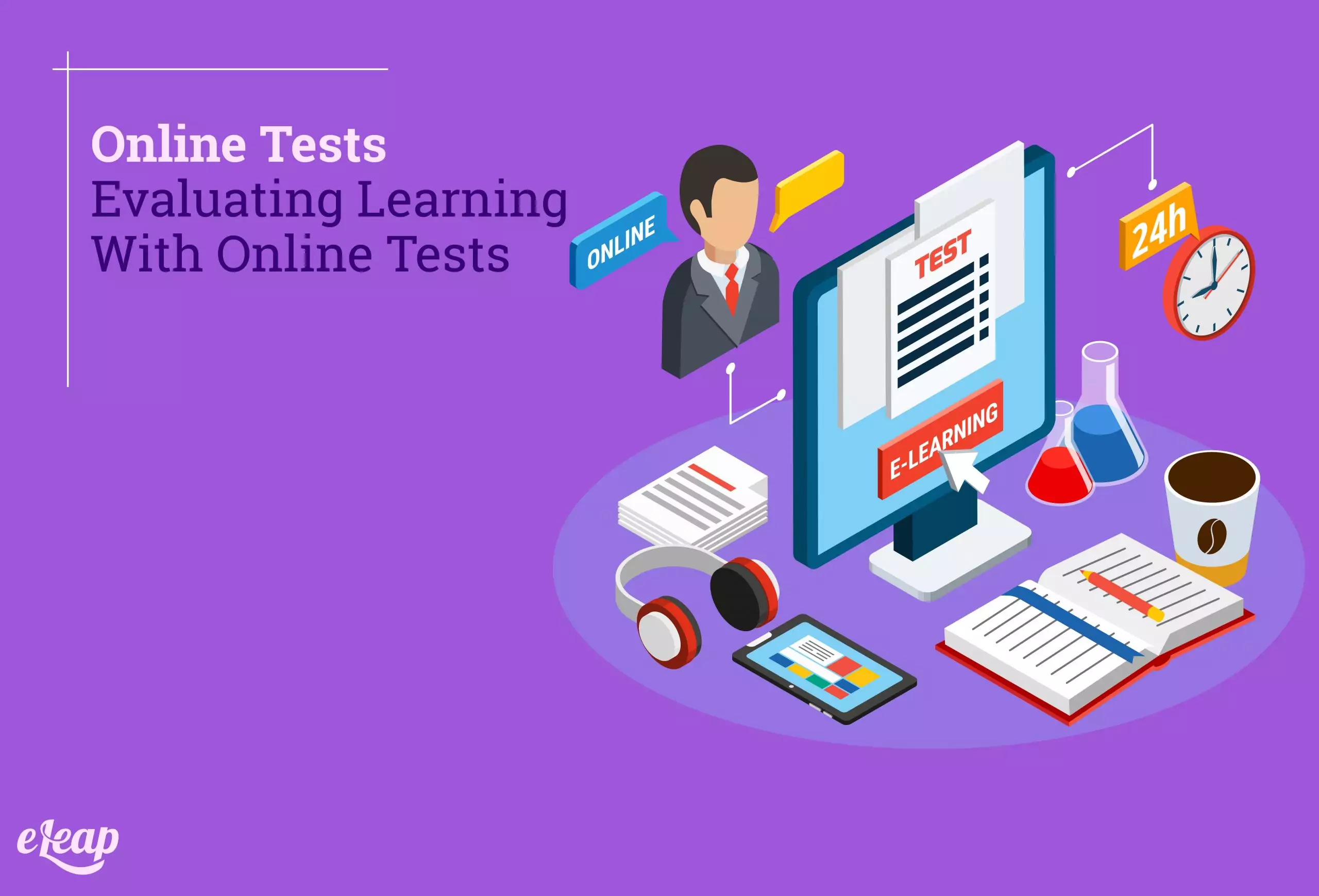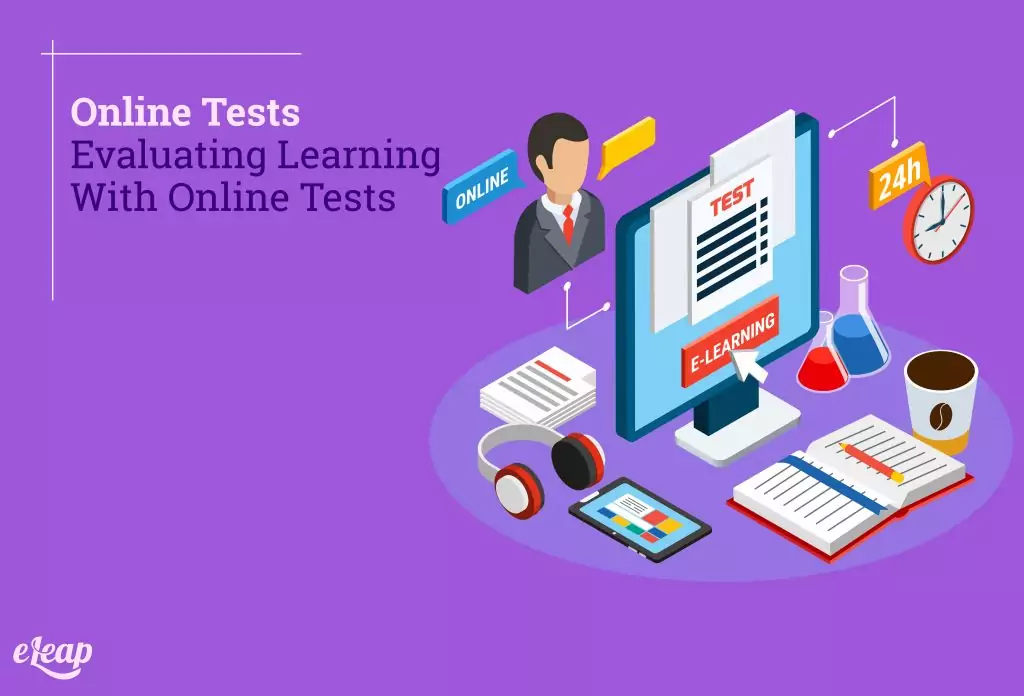Online Tests
Evaluating Learning With Online Tests

If you’ve already implemented or you are thinking about implementing a catalog of online courses for your students or employees, you’re on the right track. But how do you know if your eLearning is successful? How can you ensure students are learning and absorbing information in a way that is applicable to their roles and positions? How are these courses improving their proficiency level in a given skillset or knowledge base? Online tests are your simply but powerful solution.
Online tests are the ultimate tool to assess learning, retention, and growth with your eLearning.

What are the benefits of online tests?
Online tests function in the workplace the same way they do in school—they measure the knowledge obtained from the given coursework. However, assessments function as more than just markers of attainment. In fact, they can actually be tools of learning themselves.
Online tests are proven to keep learners engaged. If they know they will be tested on the material, they are more likely to pay attention to details that may come up later.
Furthermore, online tests are proven to enhance retention. Tests force the brain to recall knowledge; the more knowledge is recalled, the better the brain will be able to continue to remember and use that info in the future. It’s the brain’s “practice makes perfect!”
With better engagement and retention comes higher employee morale. Employees can use this information that they were tested on to grow their professional career.
Maybe online tests aren’t very fun while being taken, but your employees will appreciate it in the long-run!
What are the kinds of online tests available?
There are a variety of online tests you can use for a given course. It’s important to keep in mind that different learners understand material in different ways, and thus they test in different ways. While some people prefer multiple choice short quizzes, others prefer long-form essays. In this way, we recommend using a variety of assessment tools to ensure your online tests appropriately evaluate each individual despite their learning style.
You should also match the online tests to their courses. For example, a course about safety practices is primarily memorization of techniques, so you may want to use multiple choice and true or false exams. A course about leading a team may have general concepts, so essays or interactive assessments may show the best application of knowledge.
You also must distinguish between formative and summative assessments. Formative are those quizzes that take place throughout the course to help learners understand where they stand as they continue to move forward. Summative tests are at the end of the course to evaluate how much the student learned beginning to end. It’s generally recommended to include a few formative as well as a final summative to see the level of progression throughout the course.
So what are the common assessment types to choose from?
- Bubble Test
The most common type of test are “bubble tests”—those that ask the student to fill in a bubble with the correct answer. This includes multiple choice and true/false questions. These tend to work best for memory-based skillsets. They can be used to demonstrate application of knowledge if they are used in a scenario format, where the question presents a scenario and the student fills in the bubble with the response they deem most appropriate.
- Essays
These are generally more subjective and better show understanding of application. An example question could be: “Take 20 minutes to discuss how you would respond to xyz situation based on the concepts you learned in this course.” Although these in-depth responses can better evaluate each individual’s growth within the course, these essays can take awhile for a facilitator to grade and it is hard to gather and compare response data.
- Interactive Assessments
These online tests present interactive scenarios and simulations to which the student must then respond. They can respond with bubbles, essays, game-interaction, and even in-person responses.
- Self-Assessment
Asking students to grade themselves shows how engaged they were with the material. You can ask them to write a few sentences about why they gave themselves that grade, and generally people are honest on these sorts of assessments. This will give you insight into how well the employee was able to retain the info, and it’s a good page to add to their file for future promotions.
- Online Presentations
For certain courses, creating a presentation is the best way to demonstrate what they learned. Students create a presentation, website, or portfolio where they teach others what they learned; it has been proven that “teaching” others improves retention and overall understanding of the material. After they upload the presentation, their peers can see it and use it as a resource moving forward. It can also be a good resource for the creator of the presentation, so they can reference their presentation and see the material in their own voice and in their own way.
These presentations can be reviewed by a facilitator or their peers. Generally, these take longer to create and evaluate—but they are one of the best ways to assess true knowledge gained. Furthermore, presentation building is an important business skill—so they’re learning even more with their online tests!
- Group Projects
Online presentations can become online group projects if it would be too time-consuming for a single individual to create. Group projects are also a great idea if you are teaching a variety of groups and departments the same skillset. For example, you could have one person from each department work together to create a presentation regarding “How To Use Social Media For Marketing Growth.” The accounting department would likely have different key takeaways than the marketing department, which would have different takeaways than the production department! This is a great way to bring different departments together to unify learning and development.
- On-The-Job
Although these aren’t online tests, assessing on-the-job performance immediately following the course is a great way to review application of knowledge. It provides you the best answer to the question: “How will the employee use this information in their job?”
Online Tests Bottom Line
Evaluations post-course help to understand how successful the courses are and how well your employees retained the information. Online tests allow you to see how each individual is growing after each course they take, and they also help you understand how the general department or group is faring with your course L&D. Together, these understandings can help you review the overall benefit and ROI of training. Using the right online tests for assessment is the key to monitoring the success of your learning and development strategy.